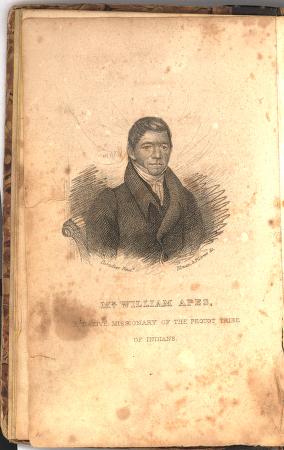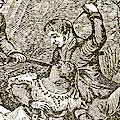
As white populations surged around them, Algonkian people in New England--Wampanoag, Mohegan, Pequot, Narragansett, Nipmuc, Scaghticoke, Mahican, Abenaki, Penobscot, Passamaquoddy, Micmac, Maliseet, and many others-- lived what seemed to their white neighbors to be marginal existences. Local histories and newspapers began to interpret the deaths of elderly Native individuals as part of a more general death or disappearance of Native Americans as a people.
Even as this "last of the Indians" myth of disappearance gained strength, written records, including tribal records, government documents, and family papers reveal a persistent and continuous Native American presence in New England. The life and writings of William Apes (1798-1839), a Pequot preacher, provide rare insights into Native life and community. Apes drew attention to racism and legal injustices, revealing the sophistication of Native peoples' understanding of their situation.
William Apes, a Pequot, from his book "A Son of the Forest," 1831
See the Digital Collection for further information.
|








